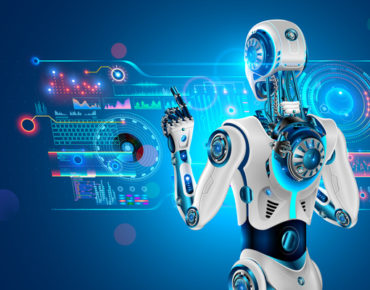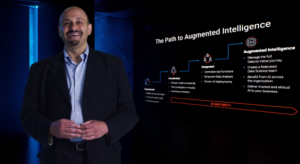DataRobot Updates Its AI Platform, Acquires Data Science Startup Zepl

DataRobot unveiled several enhancements in its automated machine learning platform today, including the introduction of features like composable ML and continuous AI. The company, which is holding a virtual conference today and tomorrow, also bought Zepl, the data science notebook startup founded by the backers of Apache Zepplin.
During a session at DataRobot’s AI Experience Worldwide virtual conference, Nenshad Bardoliwalla, the company’s senior vice president of product, led attendees through a roundup of the company’s 2020 accomplishments, and laid out a roadmap for what DataRobot hopes to do in 2021.
“2020 was a busy year at DataRobot,” said Bardoliwalla, who joined DataRobot in late 2019 when it acquired Paxata, the data preparation company he co-founded. “Perhaps we had a little more time on keyboards, not having to commute during the pandemic.”
For starters, DataRobot completed the integration of the Paxata data prep tools, he said. It also rounded out its end-to-end data pipelines to support model training, inference, and continouous improvement, Bardoliwalla said.
“We enhanced AutoML significantly with the addition of visual AI to automate and democratize computer vision models, location AI to add geospatial awareness, and automated deep learning to help you try new approaches on your tabular text and your image data,” he told the audience. “We also added automatic feature discovery to automate the laborious and repetitive feature engineering activities from multiple related datasets into a single operation.”
2020 also saw DataRobot bolster its time-series capabilities with automated anomaly detection; add support for Keras deep learning libraries; roll out new MLOps agents to support remote models; add a champion-challenger framework to stress-test ML models; introduce an application gallery; and roll out a value tracker for AI.
“I believe we set the bar high for innovation,” Bardoliwalla said. “And now we plan to surpass it.”
The company already rolled out its first new release in March with the launch of DataRobot version 7.0. That release brought enhancements in MLOps, model baseline comparison, computer vision, and data prep.
With today’s announcement, the company is once again bolstering capabilities across its expansive AI platform, including the introduction of what the company is calling “composable ML,” which Bardoliwalla called “another first in the field of data science and machine learning.”
Composable ML is a feature for the most advanced “code-first” data scientists that gives them more capabilities to tweak and tune their ML models, Bardoliwalla said.
“You’ll be able to copy, edit, and even reconfigure DataRobot’s blueprints to fit the specific needs of your use case and the best practices unique to your business,” he told the audience in today’s session. “Within any DataRobot blueprint, you’ll be able to integrate your own Python and R code to add new custom tabs into our model. You can even bring your own training models built from scratch by your best data scientists and run them in our head-to-head model competition. Once you see how they place on our leaderboard, you can decide which model” to use.
Meanwhile, the new “Continuous AI” feature is designed to bolster the DataRobot MLOps product to fine-tune the retraining policies for machine learning models.
“You will now be able to set automatic retraining policies for your production models based on a schedule of your choosing, or on the occurrence of a significant event, such as the detection of data drift or a dip in model accuracy,” Bardoliwalla said.
Continuous AI will leverage DataRobot’s champion-challenger framework to analyze the performance of production models and recommend when the model should be replaced. It’s all about automating the tasks that are mostly done manually by data science practitioners today, Bardoliwalla said.
Read the rest of this story in its entirety here on our sister web site, Datanami.
Related
Alex Woodie has written about IT as a technology journalist for more than a decade. He brings extensive experience from the IBM midrange marketplace, including topics such as servers, ERP applications, programming, databases, security, high availability, storage, business intelligence, cloud, and mobile enablement. He resides in the San Diego area.











